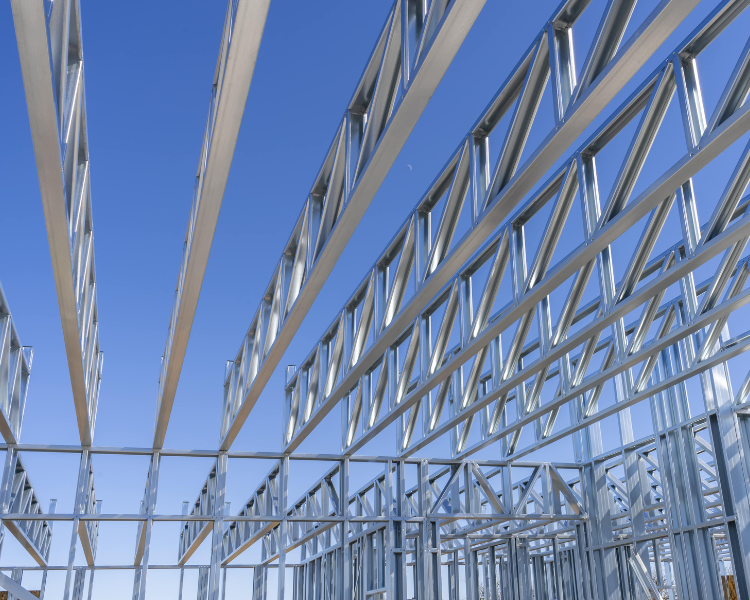Introduction
In the US, wood has been a primary choice for framing since as far back as 1924. However, times have changed, and technology has advanced and now is a great time to consider better alternatives. While wood has evolved slightly over the years the advancements in steel framing technology have been significant.

In this article, we explore some of the savings using industry metrics that Joe Doxey discussed in a recent Build it Better Podcast episode.
Exploring the Savings
There are substantial savings that come with adopting cold formed steel (CFS) framing as a construction material. While the cost difference between steel framing and traditional wood may sway to steel being more expensive on a line-item basis, when looking at the bigger picture and considering time, insurance, and long-term property savings, the cost benefits of steel framing become undeniable.
This becomes evident when taking a deeper dive into the numbers to demonstrate how the savings can soon add up over the lifetime of a construction project. When considering the benefits of steel framing, such as faster construction timelines, reduced interest payments, insurance savings and decreased waste, the cost savings soon mount up.
Joe Doxey from Douglass Colony used the example of a McDonald's restaurant to illustrate how despite a slightly higher upfront cost when using cold formed steel framing, the long-term savings are considerably advantageous.
He highlighted the remarkable speed of prefabricated light gauge steel construction, achieving the same results with a quarter of the time and manpower. He shared that the typical cost range for building a McDonald's is between $1.3 to $2.3 million US dollars. By adopting steel framing, it's possible to cut down the construction timeline by 5-6 weeks, amounting to savings of $5,000 per week - totaling $25,000 per project.
Joe also pointed out significant reductions in builders' risk insurance costs, which could amount to a 50% decrease, totaling $1.5 million. Considering the average annual earnings of a McDonald's restaurant at 2.7 million dollars, this translates to an extra revenue of $51,900 per week. Over 5 weeks, this results in 259,000 additional burgers sold, indicating the potential savings to be $200,000 to $400,000.
Although this is a commercial example these savings also apply to residential construction as well as commercial.
A Future Focused Approach
The US construction industry has the opportunity to embrace innovation and overcome the fear of change by looking at the bigger picture and considering the long-term benefits of materials like cold formed steel. US builders, developers and contractors need to adopt a future-focused approach that prioritizes efficiency, sustainability, and improved profitability.
In conclusion, these insights shed light on the transformative potential of steel framing in the US construction industry. Making data-driven decisions reveals the hidden savings that can be unlocked by adopting steel framing as an innovative material. As the construction landscape evolves, it's crucial to explore alternatives that not only improve efficiency but also create long-term financial advantages.







